Piano Key Numbers
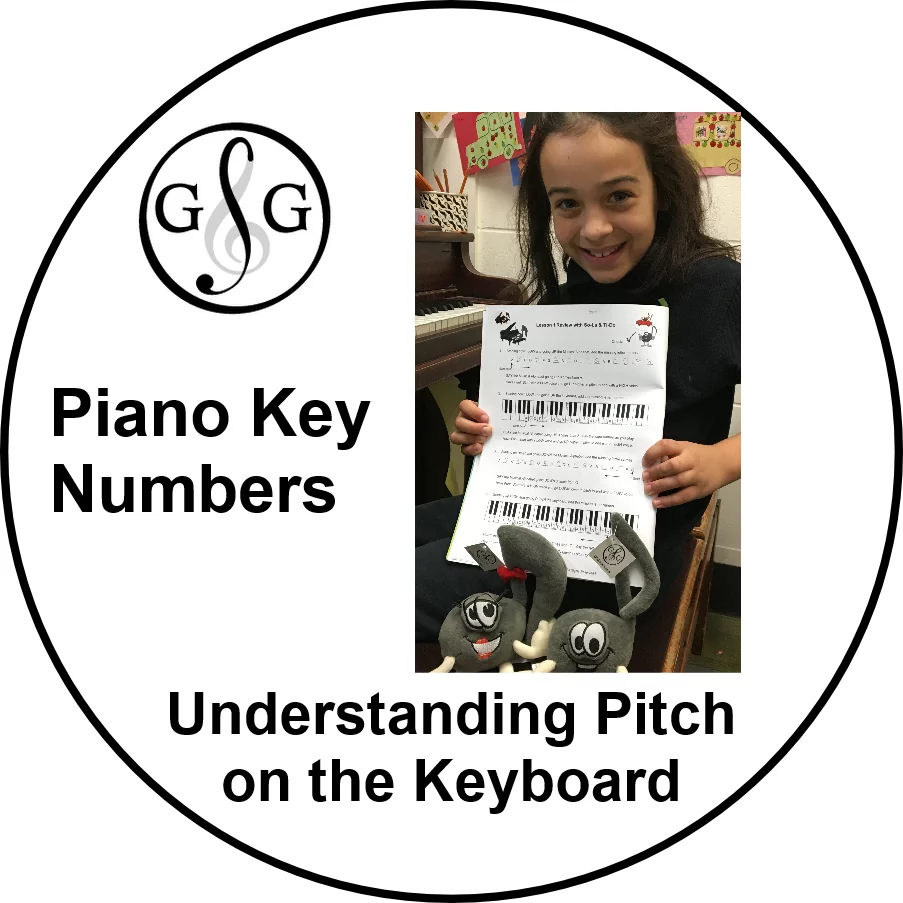
Ultimate Music Theory Certified Teacher Connie Seward asked me if there was a way to identify the specific keys (or pitches) on the piano using Piano Key Numbers. Why, yes there is!
Piano Key Numbers (or Pitch Range Numbers) are specific numbers given to the Piano Keys so that they can be identified in a consistent and logical way. These numbers also allow us to identify the range of all Musical Instruments (including the Voice) as they relate to musical pitches.
Each musical instrument has a specific range in pitch (lowest to highest note). The piano has a range of 88 keys. It is used as the basis for numbering pitches, beginning with A0 (A zero) and B0 (B zero), followed by 7 octaves from C1 (C one) to C8 (C eight). (Middle C is C4 - C four.)
Piano Key Numbers - Understanding Pitch: Low, Middle and High
When Pitch is first introduced in the Ultimate Music Theory Beginner A, B, C Workbooks, we start with 3 Pitch Range Levels - Low, Middle and High.
At Ultimate Music Theory, we understand that not all beginner students are lucky enough to have a piano or a full sized digital keyboard to practice on.
I'm sure that we ALL have stories about Parents calling to request piano lessons but they either do not have a piano or want to start on a tiny toy keyboard. Ugh.
When writing the UMT Beginner A Workbook, we use a picture of a 3 octave keyboard. This allows the Students to be able to think in terms of pitch being either low, middle or high. (So, whether your Student is practicing on a smaller keyboard or on a full sized keyboard, they will be able to relate to the concept of low, middle and high pitches.)
As Students continue through the Beginner A, B and C Workbooks, then into the Prep 1 Rudiments and Prep 2 Rudiments Workbooks, the size of the keyboard is extended until all 88 keys are featured.
However, Step #1 to Understand Pitch is to understand Low, Middle and High.
If you have ever taught young students, I bet that you have heard Students confuse a "low pitch" with being "loud" and a "high pitch" with being "soft". Young Students may not understand the concept of Pitch as they have never really been introduced to it. An understanding of Pitch is NOT something that all children are born with!
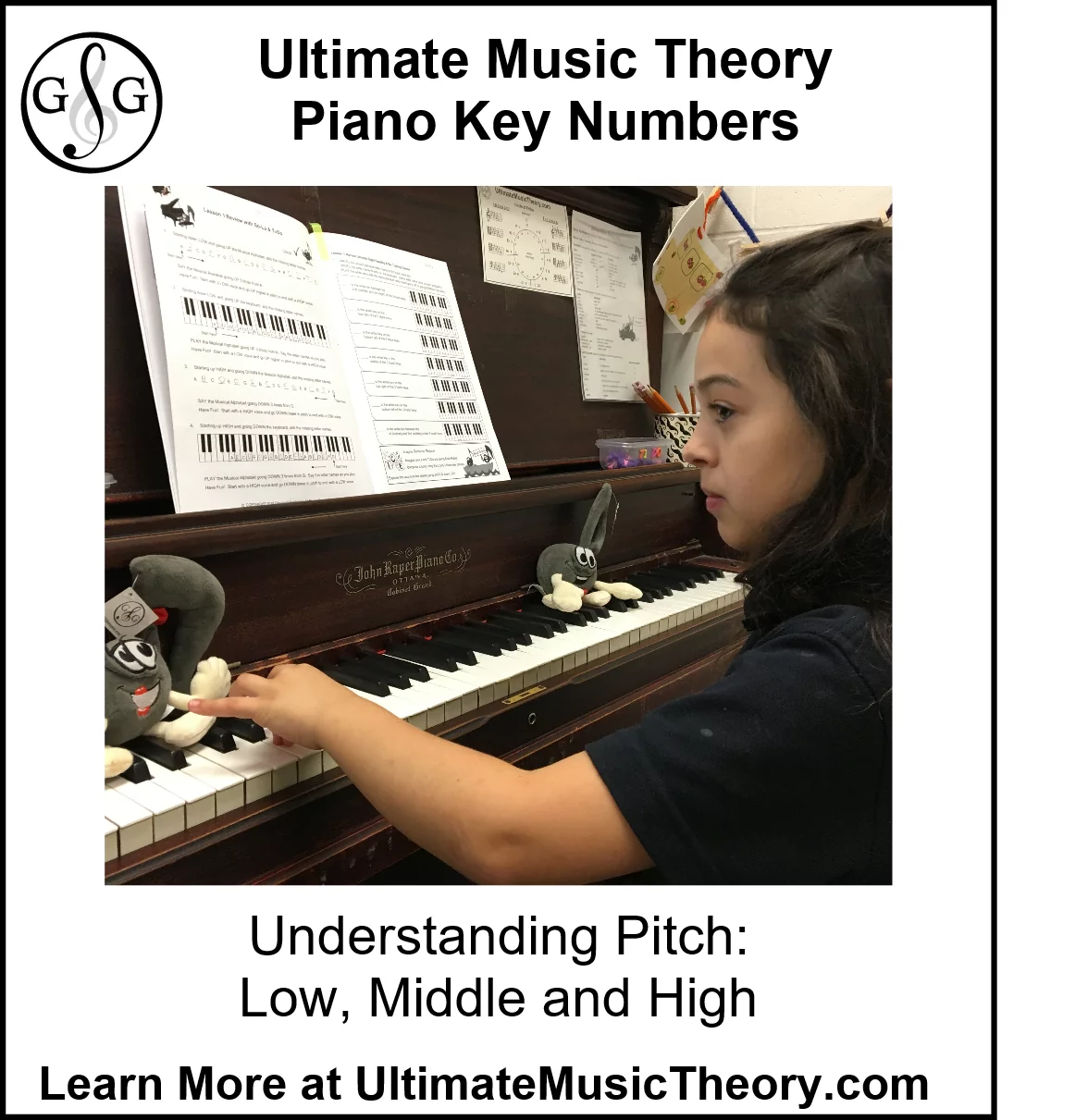
Piano Key Numbers - Supporting Students in Understanding Pitch
When a Student struggles to understand Pitch, my suggestion is to move OFF of the piano bench. Crouch the body down LOW to the ground and play LOW pitches on the Keyboard. Say/sing "low" in a low grumbly voice. Play MIDDLE pitches standing, saying "middle" in a middle normal voice. Then play HIGH pitches. Stand on tippy toes reaching up to the sky and say "high" in a high squeaky voice.
Another suggestion is to describe pitch as it relates to how a Baseball Pitcher would throw the ball to the Catcher. The Batter is the person hitting the ball. Each Batter has a "strike zone", a range from low to high where he/she is able to hit a ball that is thrown by the Pitcher. The Pitcher must throw the ball inside the Batter's strike zone. The Catcher can signal the Pitcher to throw the ball within the range of the strike zone. To be more specific, the Catcher can tell the Pitcher to throw the ball either low, middle or high within this range.
I play a game where the Student pretends to be the Batter. I "pitch" them a ball by playing either low pitched notes, middle pitched notes or high pitched notes. The Student "Batter" then "swings their pretend bat" at either a low, middle or high pitch and they say "low", "middle" or "high" as they pretend to hit the ball.
Start by playing this game so that the Student can SEE the Keyboard and SEE where you are playing the sounds. When the Student finds that easy, have them turn around and play the game so that they cannot see the Keyboard!
When a Student can hear the pitch, say/sing the pitch and match their body to the pitch, it is easier for them to understand the concept of Low, Middle and High Pitches.
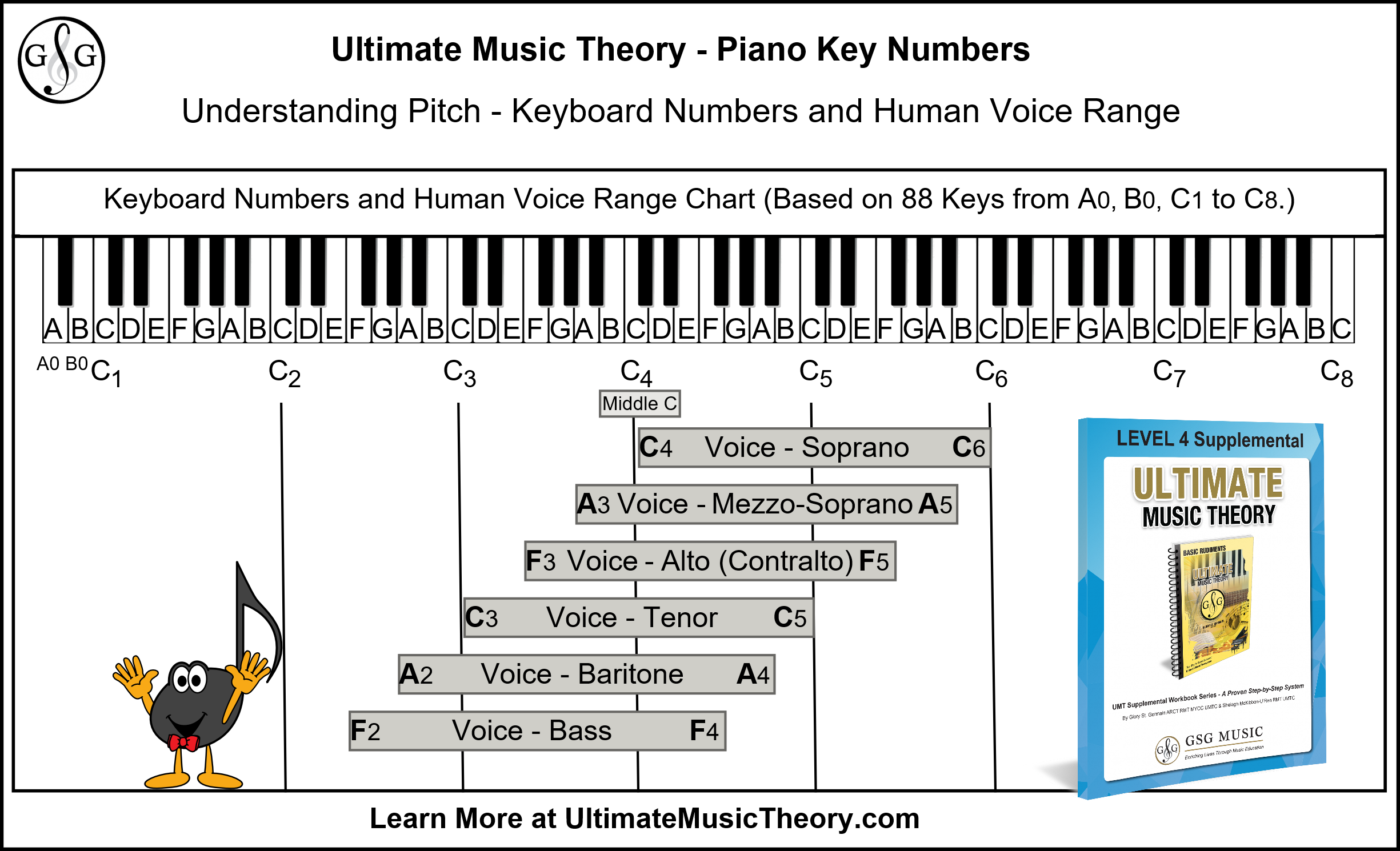
Piano Key Numbers - Piano and Vocal Range
Over the years, Pitch Numbers were assigned to specific Piano Keys. The Range of Pitch for Instruments (including the voice) was identified to match specific Piano Key Numbers.
If you know who the first person to do/create this was, I would love to hear from you! In all my research, this concept was simply "done" (but I don't know who did it first).
One of my favorite "new concept pages" that is introduced in the Ultimate Music Theory Supplemental Series is found on Page 50 of the LEVEL 4 Supplemental Workbook.
Explore this page with your Students. Have them discover what their Vocal Range is and identify it using the Piano Key Numbers.
When Students ask me why the very bottom notes are A0 and B0, I explain that Mozart wrote his piano music for instruments of about 5 octaves. (Students start to learn about Mozart beginning in the Ultimate Music Theory LEVEL 2 Supplemental Workbook.)
The Piano Keyboard was expanded so that Beethoven wrote piano music for a keyboard of about 6 1/2 octaves. The range of most modern pianos is now 7 1/3 octaves.
When piano keys were first numbered, C1 was the lowest note. As the piano keyboard was expanded, the A and B were added below. Instead of changing all the numbers so that A started with A1, we simply refer to the lowest A and B on the piano as A0 and B0 (A zero and B zero).
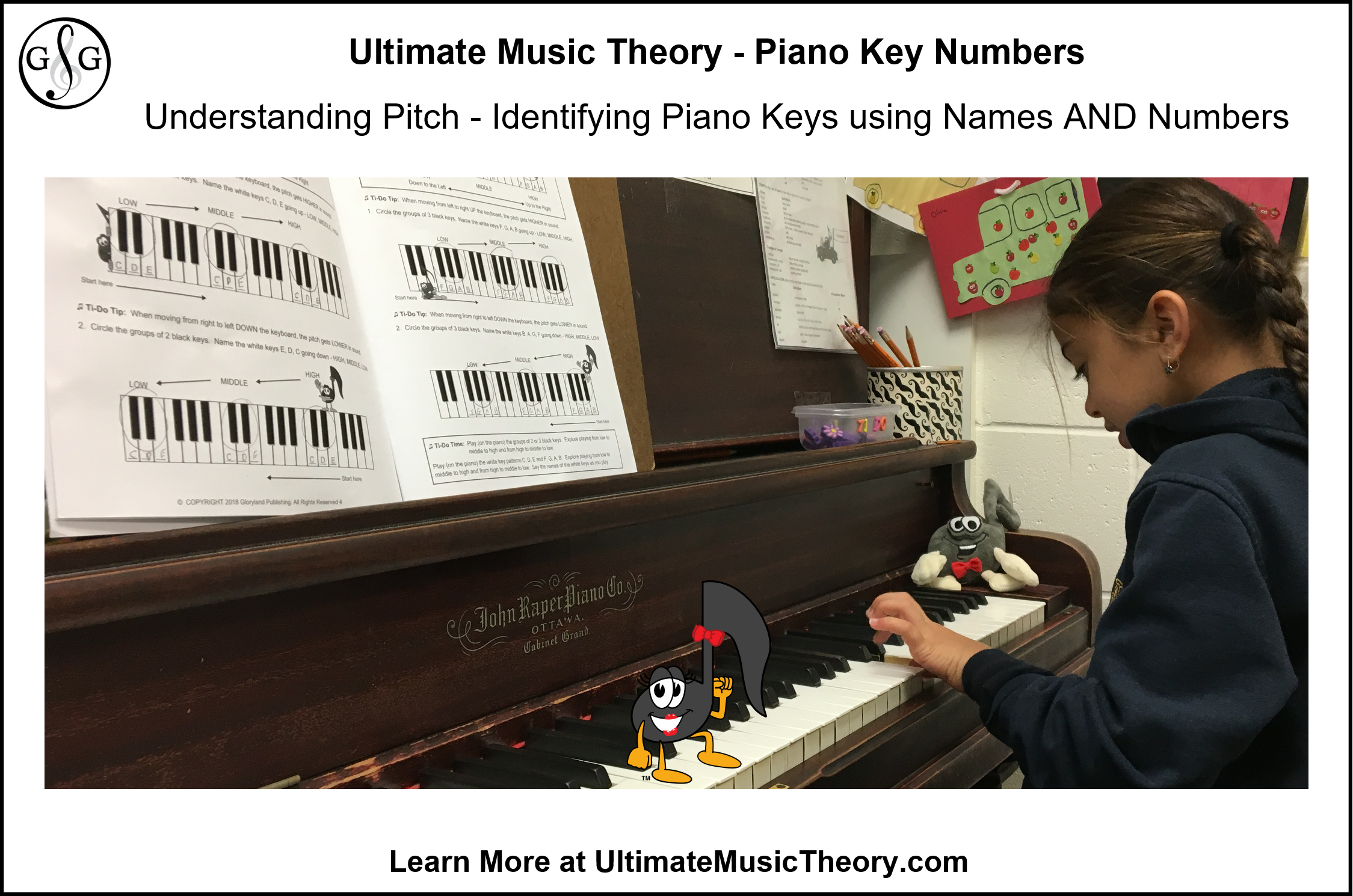
Piano Key Numbers - Why Do We Need to Understand Pitch?
So, why do we need to match pitches with numbers?
For me, I use the Piano Key Numbers all the time when I am teaching and working with Duets and Trios. For Example, the Primo will start with Right Hand Finger #1 on C6 and Left Hand Finger #1 on G5. The Secondo will start with Right Hand Finger #1 on C4 and Left Hand Finger #1 on G3.
On their Duet or Trio Music, I will simply write the Piano Key Number above the first note in the Treble Staff and below the first note in the Bass Staff for each of the Performers. The Students then understand where they are to practice on their piano at home (so that the practicing at home will be at the same pitch as the performance with their duet or trio partners).
Another excellent use of Piano Key Numbers is for Technical Requirements (Scales, Triads, etc.). By identifying the first note of each Technical Requirement as being, for example, G4 in the Right Hand and G3 in the Left Hand, the student knows that they will not run out of keys when playing their 2 octave scale.
One thing that I have discovered is that young Students feel "musically empowered" when they can identify these notes by their Piano Key Numbers.
When an 8 year old comes to their lesson and says "I like to play my C Major Formula Pattern starting on C2 in my Left Hand and C3 in my Right Hand because I like the sound of the lower pitches!", it really is an amazing feeling! (True Story and a very proud Teacher Moment!)
Join the Conversation! Comment below and let me know how you use Piano Key Numbers in your Teaching! I would love to hear from you.
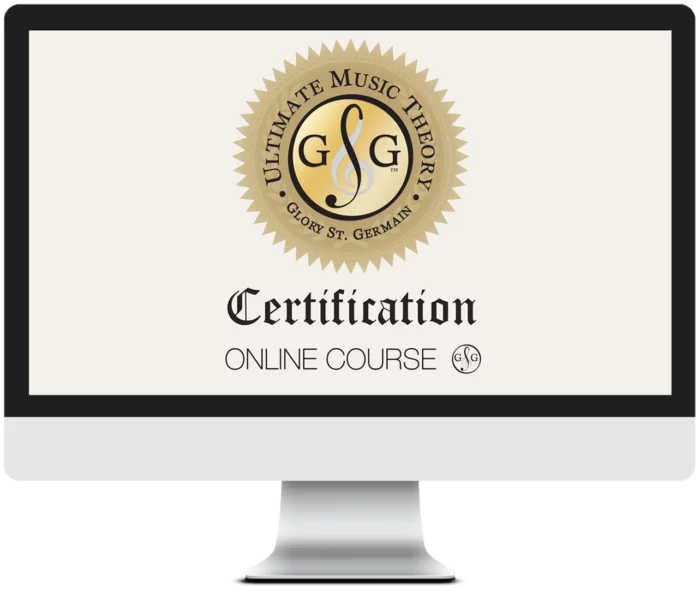
Ultimate Music Theory Certification Course Online Teacher Training includes: 50 Video Sessions, All Materials, Online Support,
Exam Marking & Certificate!
Click HERE to discover what you will learn in the Ultimate Music Theory Certification Course. Your professional development Online Teacher Training starts here.
Keep on Learning... With a Smile and a Song!
Shelagh McKibbon-U'Ren

